Say the words “rock gardening” to most young(ish) gardeners and they’re likely to gently wrinkle their noses and shake their heads in amused bewilderment, almost as if you’d asked them if they enjoyed stamp-collecting, or Morris-dancing, or crocheting.
The truth is that rockeries, or alpine gardens as they’re also known, have been so firmly out of vogue for so long that it’s difficult to find anyone under the age of 40 that actually has one.
Yet the irony is that these petite plants are perfectly suited to a younger generation of keen gardeners increasingly short on growing space but eager to flex their green fingers.
Given the right growing medium, many of these diminutive, slow-growing species will thrive in small terracotta pots, stone and tufa troughs and other containers including window boxes, making them a great choice for anyone living in rented accommodation who wants to take their garden with them when they move.
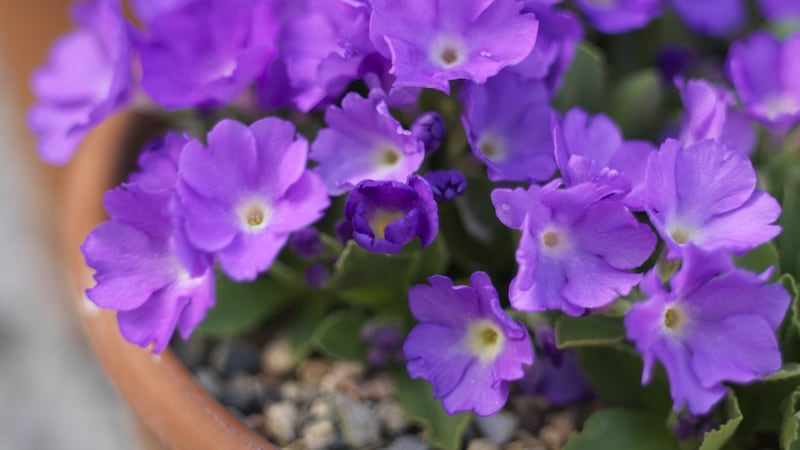
Not only that, most alpine and rock plants are also highly ornamental, with a beguiling, dolls-house beauty akin to that of tiny ivory carvings or enamel portrait miniatures.
"But for whatever reason, they're just not fashionable", agrees the Dublin gardener and alpine-plant enthusiast Triona Noonan, who is so captivated by these dainty plants that her small town courtyard garden is filled with several hundred carefully manicured specimens growing in a variety of small pots and urns.
That collection includes Thumbelina-sized daffodils, each flower no longer than a couple of centimetres, plump mounds of saxifrages, tiny tulips and fleshy lewisias as well as a series of miniature containerised gardens created using carefully-placed stones and choice combinations of different alpines and rock garden plants.
Proof of these plants’ portability is that almost every one of them came with Triona and her husband Rory when they sold their old home some months ago. Indeed they will be moving with them yet again in just a few months time, as the town garden in which they’re now growing belongs to a house being temporarily rented by Triona and her husband while they wait for their new home to be refurbished.
Although she’s been intrigued by them all her adult life, Triona got properly hooked on alpines and rock plants some years ago after a visit to the annual spring show of the Dublin Group of the Alpine Garden Society (AGS).
Regular trips to Murphy&Woods, the Dublin garden centre well-known for its extensive stock of these plants, also fed the spark.
Sharp drainage
“I discovered that they’re actually surprisingly easy to grow as long as you give them what they want, which more than anything is very sharp drainage. So my go-to growing medium is one part John Innes No 2, one part grit and one part horticultural sand. I never, ever use a peat-based compost unless I’m growing miniature bulbous woodland species such as erythroniums, trilliums or fritillarias, in which case they get a mix that’s one part John Innes No 2, one part grit, one part Brown Gold and one part leaf mould.
“A top layer of grit or fine chippings also helps to keep them happy. For the same reason I’ve learned from bitter experience not to plant alpine or rock plants in a traditional border.
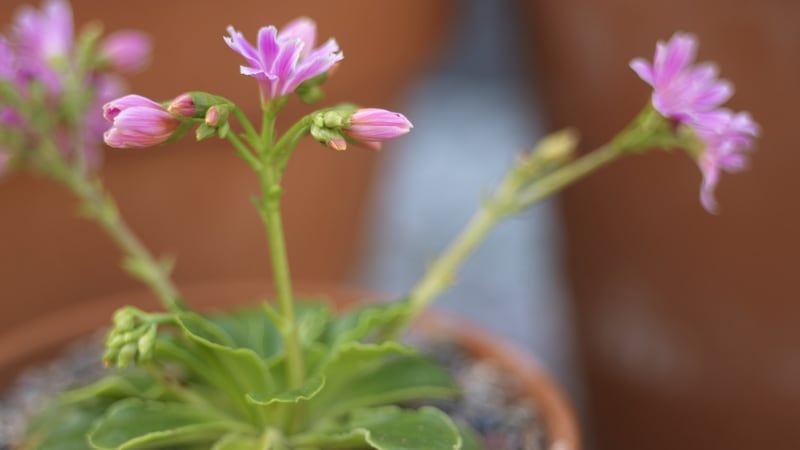
“The soil is just too wet for them in winter while they’re so small that they quickly become swamped by more vigorous plants. Instead you need to grow them in containers or in a raised rockery or scree bed that replicates their natural growing conditions in the wild, typically rocky places, often at high altitudes.”
After becoming a member of AGS, three years ago Triona took the plunge and entered some of her best plants as competitive exhibits in a handful of shows.
Amongst them was the AGS Dublin Group’s annual spring show, where a mixture of novice and highly-seasoned growers compete for first, second and third ranking in a variety of classes within three carefully categorised sections – novice, intermediate and open.
“The open section is the real deal, it’s for the serious contenders who’ve been competing for years and demands near-perfection. But novice, the category that I compete in, is aimed at the beginner and the judges are far more lenient so it’s great fun.”
She quickly learned the rules of what constitutes a prize-worthy plant, much of which are about choosing healthy, flourishing specimens in near-perfect, generous flower and paying attention to the tiniest of details right down to pot size.
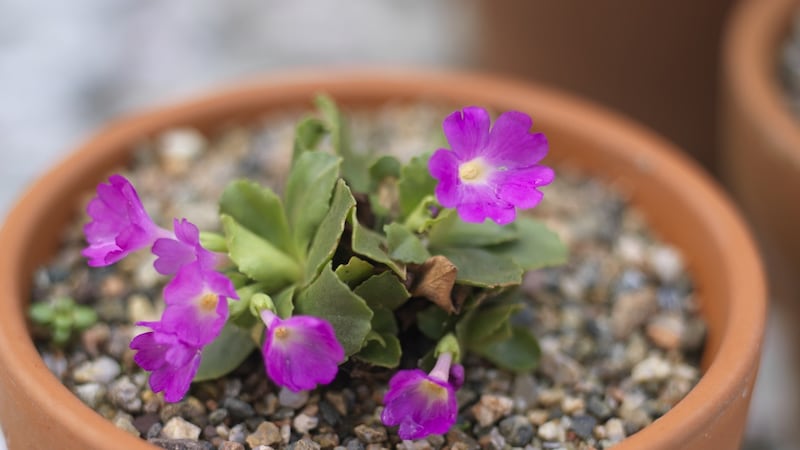
Before entering any exhibit in a show, dead or damaged leaves and flowers are removed with a nail-scissors, for example, while any piece of garden debris (no matter how tiny) that detracts from its general appearance is winkled out with an eyebrow tweezers or a wooden manicure stick.
Evenness and symmetry of growth and bloom is also important. In the weeks leading up to a show, Triona turns each pot about 90 degrees every other day to make sure that all parts of the plant receive the same amount of light.
Sheltered spot
“If I’ve a plant that I reckon will be in flower at just the right time, which is always tricky, then I’ll often move it to a cold frame or a sheltered spot for a few weeks before the show to make sure it stays as pristine as possible.
That said, plenty of exhibitors have won rankings with plants that they’ve dug up and repotted from the garden days or even hours before the show, so I’d really encourage anyone with a love of alpine, rock plants or the smaller species of bulbous woodland plants to enter this year’s upcoming AGS show, which takes place in a few weeks.
“Even for those that don’t wish to exhibit, it’s a brilliant way to get your hands on some beautiful plants for sale at the society and trade plant stalls on the day, as well as to meet like-minded gardeners.”
Plant quality aside, Triona stresses the importance of competitive exhibitors entering their plants in the right class.
“For example, if a particular class stipulates that the plant belongs to the primula family (Primulaceae) then there’s just no point entering a lewisia, because no matter how beautiful it is, it can’t be judged.”
Does that mean competitors need a comprehensive knowledge of plant taxonomy as well as green fingers?

“No, not at all, just an up-to-date copy of the RHS Encyclopaedia of Plants & Flowers and the show handbook” grins Triona.
Do her friends and family ever struggle to comprehend her love of competing?
“I have some gardening friends who are puzzled by it and others that completely get it. The truth is that it’s really great fun. And after all, at the end of the day, we’re all competitive in one way or another, aren’t we?”
Getting started – Five great alpine and rock garden plants for beginners
. Primula Broadwell Milkmaid (primula)
. Narcissus Minnow (dwarf daffodil)
. Saxifraga Coolock Kate (saxifrage)
. Hepatica nobilis (liverleaf)
. Silene acaulis (rock campion)
(For details of how to enter a competitive exhibit at this years AGS Dublin Group Annual Show on Saturday April 6th (1.30-4pm), which takes place in Cabinteely Community School, Johnstown Rd, Cabinteely, Dublin 18 , see alpinegardensociety.ie
This Week in the Garden
Many spring-sown young seedlings are now showing their first true leaves (ie the leaves that are typical of the particular species rather than the embryonic/ first leaves that emerge with germination).
This is the sign that it’s time to prick them out into cell trays or modules to allow each baby seedling room, space, light and sufficient nutrients to develop properly.
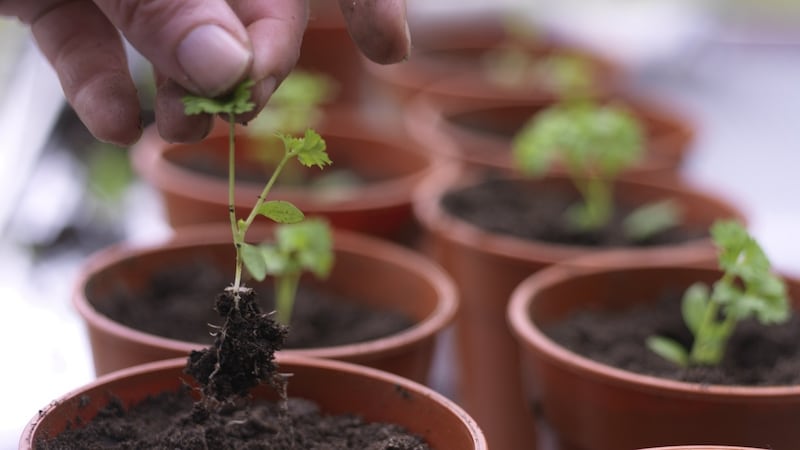
Always handle seedlings very gently by their leaves rather than their fragile stems and prick them out into a good-quality compost that has been stored indoors for a few days to avoid shocking their tiny root systems.
It’s also important to water both seedlings and compost before and immediately after pricking them out, and to keep them out of direct sunshine and protected from extremes of temperature until they re-establish themselves.
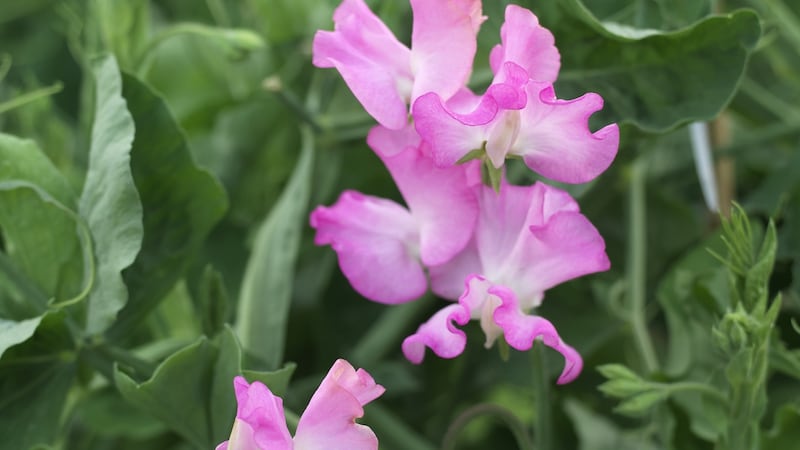
Young autumn or winter-sown sweet pea plants should be planted into their final growing positions outdoors to allow their root systems plenty of time to properly develop before flowering begins in early summer.
Along with a sunny, sheltered position and some form of strong vertical support, sweet pea likes a cool, rich, moisture-retentive but free-draining, weed-free soil enriched with plenty of well-rotted manure and/or homemade garden compost plus a sprinkle of organic, pelleted fertiliser (I use Fast Grow, an Irish-made natural seaweed and chicken manure-based fertiliser). Young plants also need to be protected from slugs until they are well-established.
In the kitchen garden or allotment, this is a great time to plant potatoes as well as onions and shallots (as sets, or baby bulbs). Varieties of onions suitable for spring planting as sets include Red Baron, Sturon and Hercules while varieties of shallots suitable for spring planting include Picasso, Bistro and Yellow Moon.
Make sure to use only plump, firm, unblemished sets for best results and to help prevent the accidental introduction of persistent soil-based diseases such as white rot.
Both shallots and onions like full sun and a firm, weed-free, very well-drained soil that hasn’t been recently manured, although a light mulch of garden compost is fine. If you have to plant them into ground that’s been recently dug, then firm it down first by placing a plank of wood on it and standing on it.
Dates For Your Diary Today (Saturday, 23rd March, 9.30am-3.30pm), The Red Stables, St Anne's Park, Raheny, Dublin 5, the first in the 2019 series of Irish Specialist Nursery Association shows takes place today with an extensive range of shrubs, trees, herbaceous perennials and garden paraphernalia on sale to kick-start the gardening year, admission free, see irishspecialilstnurseriesassociation.com for details
Tuesday 26th March, Foxrock Parish Pastoral Centre, Kill Lane, Dublin 18, Using Roses in the Garden, a talk by Michael Marriott of David Austin Roses on behalf of Foxrock & District Garden Club, see foxrockgardenclub.com
Wednesday March 27th (8pm), Wesley House, Leeson Park, Dublin 6. RHSI Floral Art Demonstration by Betty Holden, admission free to RHSI members/ €5 student non-members/€10 non-members, see rhsi.ie
Saturday 30th March (9am-5pm), City West Hotel, Citywest, Saggart, Dublin (just off the Naas Rd/M50). Mr Middleton Spring Garden Masterclass 2019 with guest speakers including nurseryman Bob Brown of Cotswold Garden Flowers, Neil Porteous, head gardener of Mount Stewart gardens in Co Down, and gardener June Blake, admission €80 including lunch and goodies bag, pre-booking essential, call 01 8603674 or see mrmiddleton.com for details
Sunday March 31st-Sunday April 7th, National Tree Week, a week-long programme of events organised by the Tree Council of Ireland in association with Coillte and Forest Industries Ireland, see treecouncil.ie for the full programme of events as well as details of how to get involved.





















